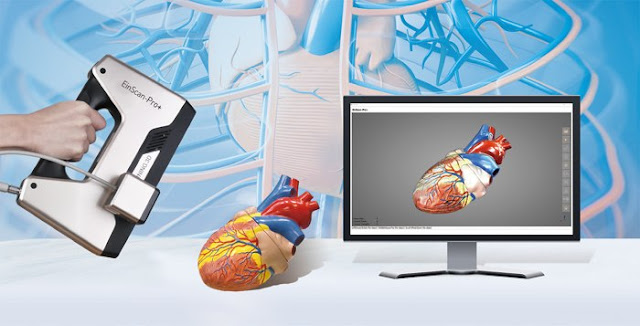3D scanning has become an increasingly popular technology used in various industries, from architecture and engineering to product design and manufacturing. The process of 3D scanning allows for the creation of an accurate digital representation of an object, which can be used to create physical models using 3D printing technology. But how does 3D scanning work exactly? We’ll check that out, along with some of its many applications now.
The Basics of 3D Scanning
3D scanning is the process of capturing a digital representation of an object using specialized software and hardware. The most common types of 3D scanning technologies include structured light scanning, photogrammetry, and laser scanning. These techniques work by projecting light or laser beams onto the object being scanned, capturing the data that is reflected back, and then using that data to create a digital representation of the object.
Structured light scanning involves projecting a pattern of light onto the object and using a camera to capture the resulting deformations. The software then uses this information to calculate the shape and texture of the object. Photogrammetry works similarly, but instead of projecting light, it uses multiple photographs taken from different angles to create a 3D representation of the object. Laser scanning involves projecting a laser beam onto the object and capturing the reflection with a sensor, creating a detailed point cloud representation of the object.
Applications of 3D Scanning
3D scanning has a wide range of applications across various industries, including architecture, engineering, product design, and manufacturing. For example, in the field of architecture, 3D scanning can be used to create digital representations of buildings for renovation and restoration projects or to create accurate building plans for new construction projects. You can even utilise 3D in your at-home projects!
In engineering, 3D scanning is used to create digital representations of complex mechanical parts and assemblies, which can be used to design new parts or improve the performance of existing parts. In product design, 3D scanning can be used to create a digital representation of a physical product, which can then be used to create a 3D model for prototyping and testing.
In the manufacturing industry, 3D scanning can be used to create digital representations of parts and products, which can then be used to create precise molds and dies for production. 3D scanning can also be used to inspect products for quality control and to detect any defects or deviations from the original design.
Benefits of 3D Scanning
3D scanning is much more flexible than traditional measurement techniques, as it can be used to scan objects of all shapes and sizes, and it can be used to capture data from objects that are difficult or impossible to measure manually. Additionally, 3D scanning is non-destructive, meaning it won’t damage the object being scanned, making it an ideal technique for preserving and restoring cultural heritage objects.
Locally, Melbourne is a hub of technological innovation and home to many companies that specialise in 3D scanning and 3D printing. These companies offer a wide range of services, including 3D scanning and 3D printing of objects, parts, and products, as well as engineering and design services.
One of the key benefits of the 3D scanning and 3D printing industry is the ability to quickly and accurately create physical models of objects and products, which can be used for testing and prototyping purposes. This allows companies to speed up their design and development process, saving time and money in the long run.
What About 3D at home?
The advancements in 3D printing and scanning technology have made these tools increasingly accessible for individuals beyond just large businesses and industries. Having a 3D Printer at home allows individuals to bring their ideas to reality by printing a wide range of objects, from toys and trinkets to furniture and replacement parts. This can be achieved through downloading designs from websites such as Thingiverse or creating original designs using 3D modeling software. The possibilities with 3D printing are truly limitless.
On the other hand, 3D scanning provides a means to digitize objects, enabling duplication, modification, and even restoration. For instance, if a cherished family heirloom is showing signs of wear and tear, a 3D scanner can be used to create a digital version of it and then leverage this information to produce a replica or repair the original. These scanners are starting to make their way into the consumer market now, and can even be bought at some specialist retail stores.
3D scanning truly is a versatile and flexible technology that offers many benefits over traditional measurement and inspection techniques. From architecture and engineering to product design and manufacturing and even in our leisure time, 3D scanning is transforming the way objects and products are created, tested, and analyzed.

